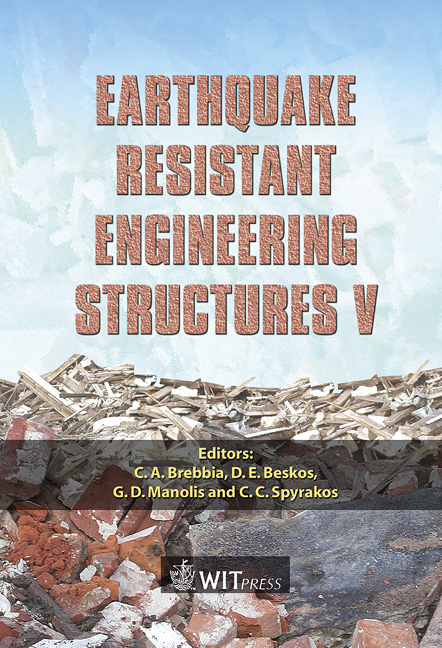Behaviour Factor Of RC Structures: A Probabilistic Approach
Price
Free (open access)
Transaction
Volume
81
Pages
10
Published
2005
Size
459 kb
Paper DOI
10.2495/ERES050681
Copyright
WIT Press
Author(s)
G. C. Thomos & C. G. Trezos
Abstract
In this study, the behaviour factor of various buildings is estimated, taking into account the random character of their characteristics. The pushover analysis is adopted and the basic variables of the building are considered as random. Monte Carlo methods are used for the simulation of the random character of the basic variables and a series of pushover curves is obtained. Each pushover curve is combined with the seismic response spectrum to obtain the maximum spectral acceleration that the building can withstand and the yield spectral acceleration of the building. The behaviour factor is estimated by dividing the peak ground acceleration of the maximum spectrum with the peak ground acceleration of the yield spectrum. Keywords: behaviour factor, simulation, Latin Hypercube Sampling (LHS), pushover, fibre elements. 1 Introduction Modern seismic codes focus on the ability of the structures to dissipate energy through large inelastic deformations. Structural elements are designed with special demands in order to be capable of an appropriately ductile behaviour. In this way, it is ensured that the whole structure will be able to respond inelastically to the design earthquake. The expected inelastic response of the structures is taken into account, in the design of reinforced concrete structures, by using the behaviour factor q, which divides the elastic response spectral values to obtain the reduced (inelastic) design response spectrum. In codes practice, the estimation of the behaviour factor q is based on simple empirical relationships that give the same q values for a wide range of buildings.
Keywords
behaviour factor, simulation, Latin Hypercube Sampling (LHS), pushover, fibre elements.





